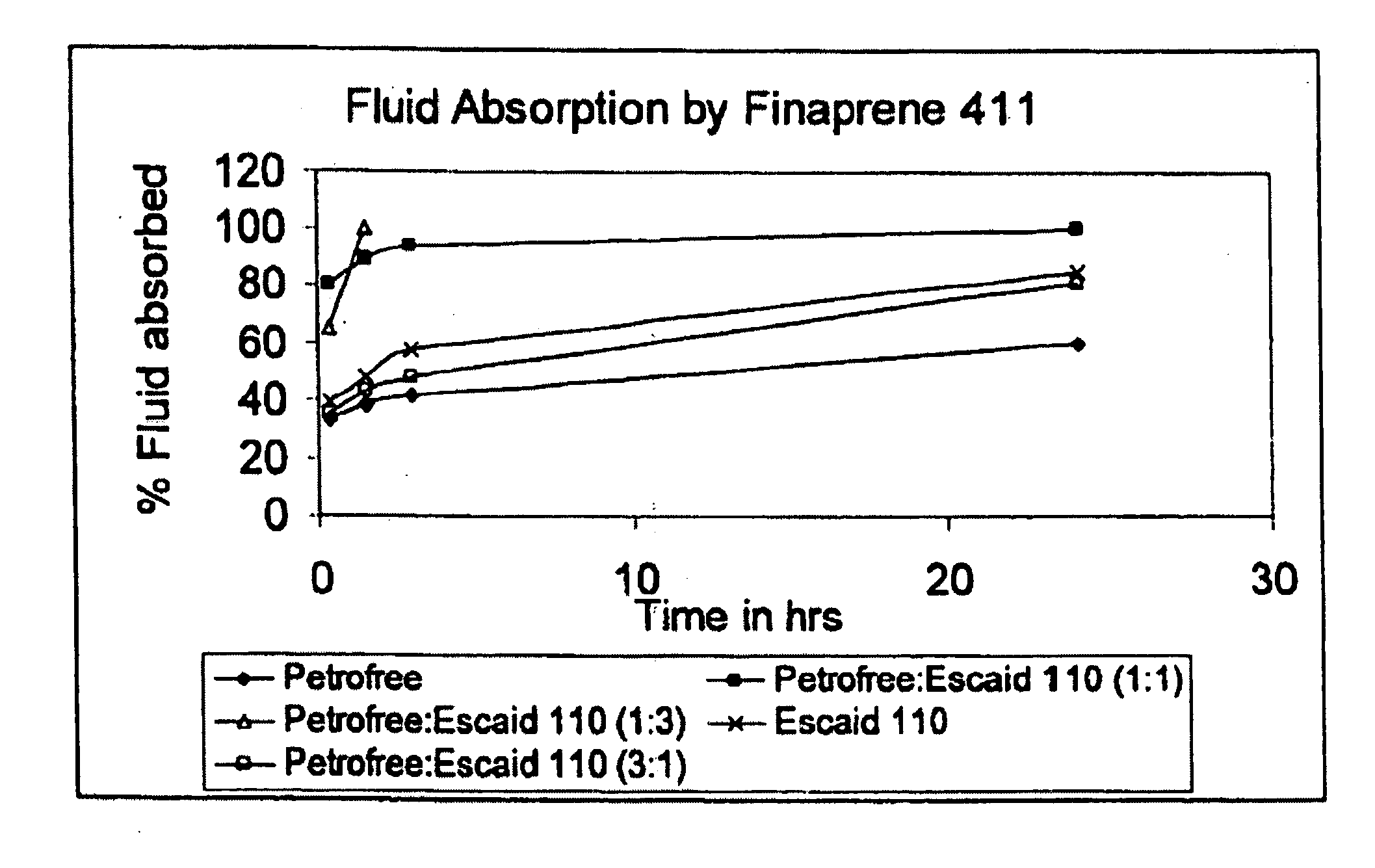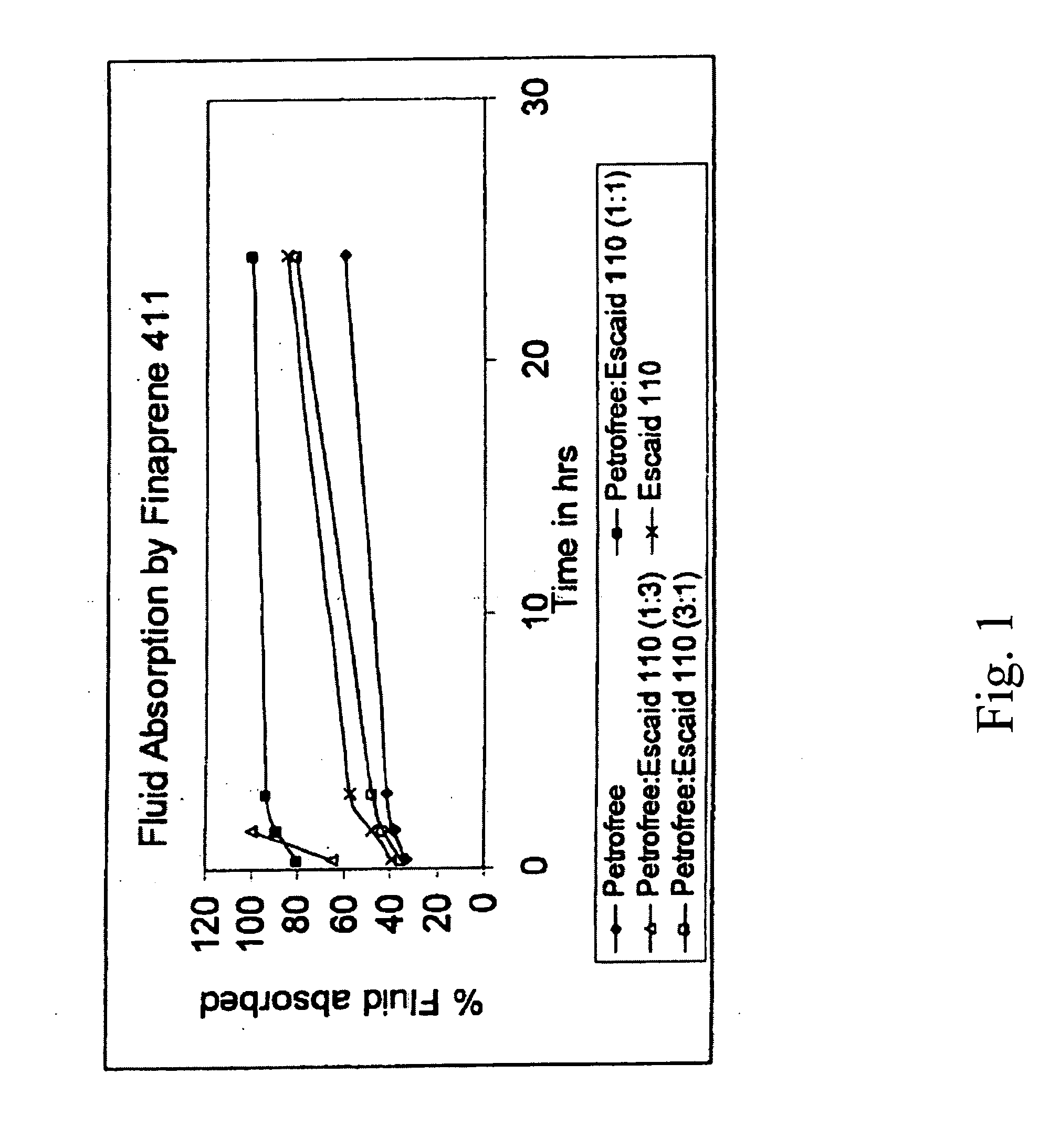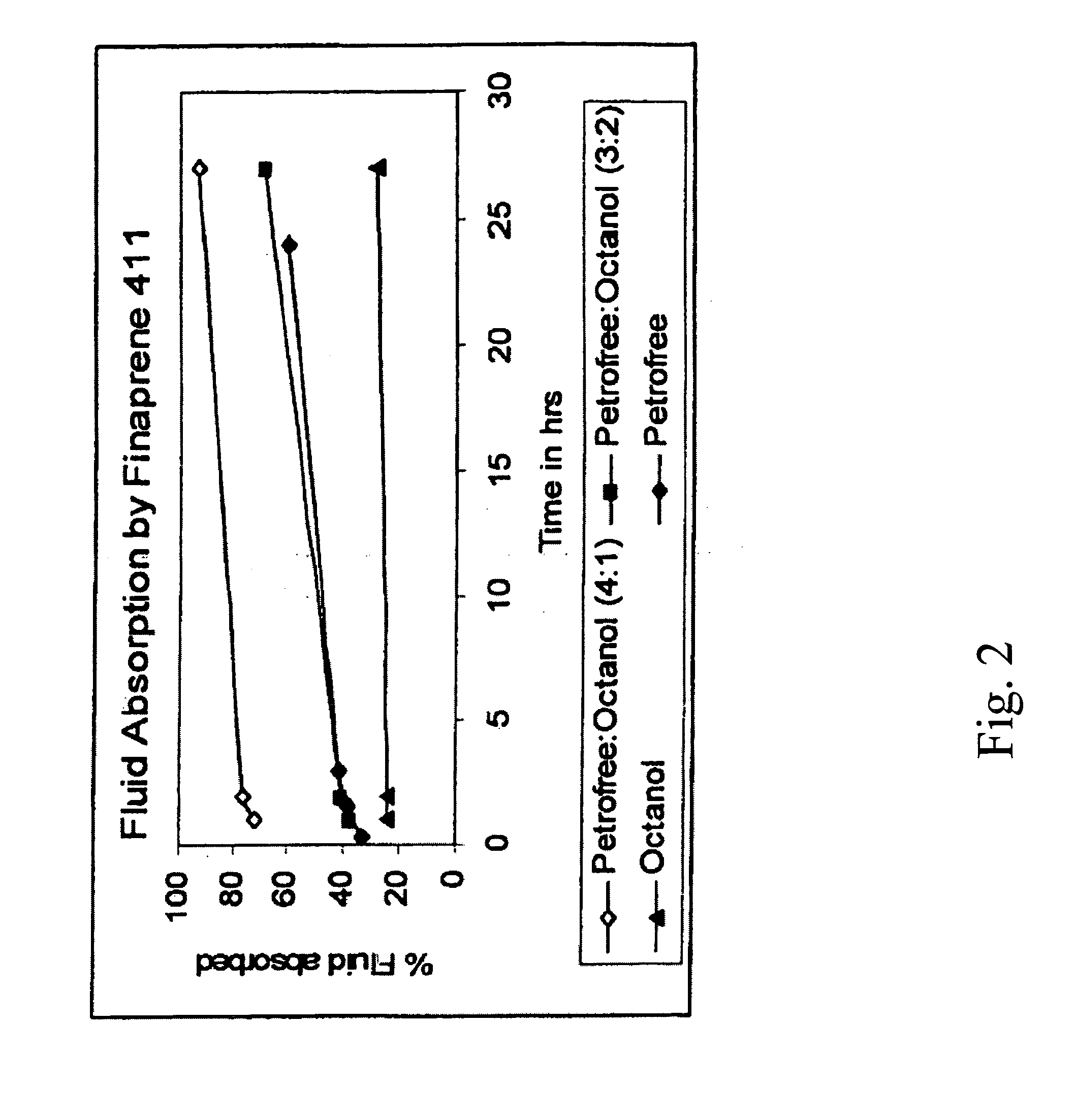Methods for wellbore strengthening and controlling fluid circulation loss
a technology of fluid circulation loss and wellbore, which is applied in the direction of sealing/packing, wellbore/well accessories, chemistry apparatus and processes, etc., can solve the problems of fracturing fluid loss, other fluids used in servicing a wellbore such as drilling fluid loss to the subterranean formation, and the need to plug the first used fracture, etc., to achieve the effect of reducing the premature swelling of the sealing agen
- Summary
- Abstract
- Description
- Claims
- Application Information
AI Technical Summary
Benefits of technology
Problems solved by technology
Method used
Image
Examples
examples
[0043] The invention having been generally described, the following examples are given as particular embodiments of the invention and to demonstrate the practice and advantages thereof. It is understood that the examples are given by way of illustration and are not intended to limit the specification of the claims in any manner.
example i
[0044] Fluid absorption studies were conducted using FINAPRENE 411 elastomer as the sealing agent. Four mixtures were prepared each having of 5 grams of FINAPRENE 411 elastomer and 50 ml of nonaqueous fluid. The nonaqueous fluids were PETROFREE organic carrier fluid, which is an organic ester-based fluid available from Baroid Drilling Fluids, ESCAID 110 hydrocarbon fluid and octanol. The mixtures were incubated at room temperature for 24 hours and then heated for 1 hour.
[0045] The rate of fluid absorption by FINAPRENE 411 elastomer was measured by pouring out or filtering the fluid at periodic intervals through a No. 8 mesh screen and the results are as shown in FIGS. 1 and 2. The filtrate weight was then determined. FIGS. 1 and 2 are graphs of the percent fluid absorbed by FINAPRENE 411 elastomer as a function of time for the indicated nonaqueous fluids. FIGS. 1 and 2 demonstrate that the fluid absorption levels and as a result, the swelling rates of FINAPRENE 411 elastomer, can b...
example ii
[0046] The ability of FINAPRENE 411 elastomer to form a uniform rubbery mass when contacted with PETROFREE organic carrier fluid or ESCAID 110 hydrocarbon fluid or any suitable combination of these fluids was also observed. A mixture of 5 grams of FINAPRENE 411 elastomer and 50 ml of nonaqueous fluid was incubated at room temperature for 24 hours. The mixture was then heated at 140° F. for 1 hour in a water bath. Table III shows the observed conformation changes of the indicated sealing agent, which is a thermoplastic elastomer, as a function of nonaqueous fluid, time and temperature.
TABLE IIIFluid SystemObservationsPETROFREE organic carrier fluidViscous pourable fluid, thethermoplastic elastomer dissolvedin fluidPETROFREE organic carrier fluid:Viscous pourable fluid, theESCAID 110 hydrocarbon fluid (1:1)thermoplastic elastomer dissolvedin fluidPETROFREE organic carrier fluid:Viscous pourable fluid, theESCAID 110 hydrocarbon fluid (1:3)thermoplastic elastomer dissolvedin fluidPETR...
PUM
| Property | Measurement | Unit |
|---|---|---|
| hydrophobic | aaaaa | aaaaa |
| particle sizes | aaaaa | aaaaa |
| weight | aaaaa | aaaaa |
Abstract
Description
Claims
Application Information
 Login to View More
Login to View More - R&D
- Intellectual Property
- Life Sciences
- Materials
- Tech Scout
- Unparalleled Data Quality
- Higher Quality Content
- 60% Fewer Hallucinations
Browse by: Latest US Patents, China's latest patents, Technical Efficacy Thesaurus, Application Domain, Technology Topic, Popular Technical Reports.
© 2025 PatSnap. All rights reserved.Legal|Privacy policy|Modern Slavery Act Transparency Statement|Sitemap|About US| Contact US: help@patsnap.com



